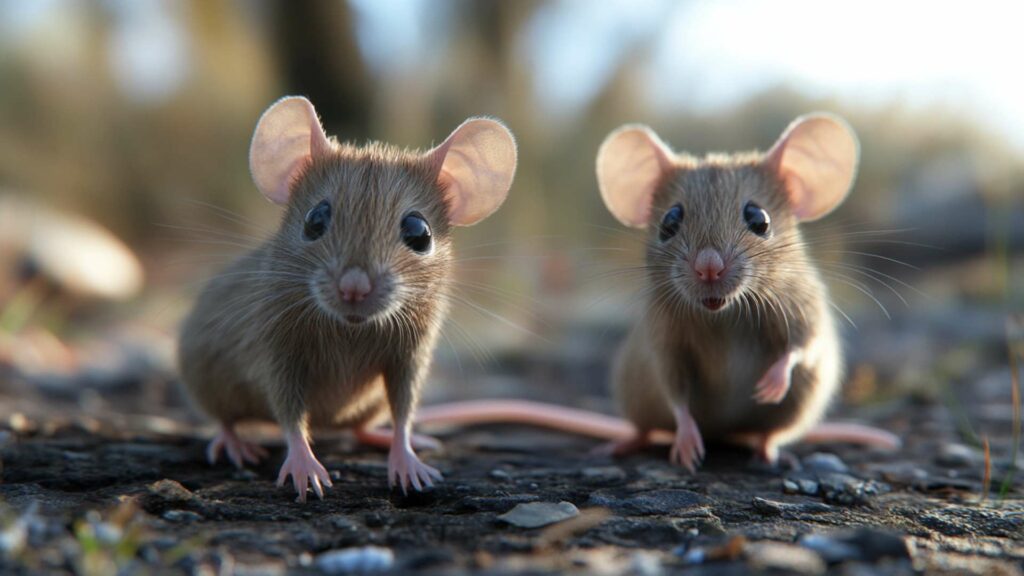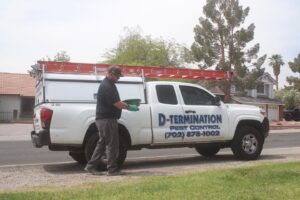The Importance of Sealing Entry Points for Mice
If you have ever had to deal with a mouse infestation, you know how frustrating and unsanitary it can be. Mice can carry diseases, leave droppings and urine throughout your home, and even cause damage to your property. But did you know that one of the best ways to prevent mice from entering your home is by sealing off their entry points?
Mice are tiny creatures that can squeeze through holes as small as a dime. This means that even the smallest cracks and gaps in your home’s exterior can serve as an entry point for them.
Once they get inside, they will start looking for food, water, and shelter. By taking steps to seal off these common entry points for mice and how to seal them before they become a problem, you can significantly reduce the chances of a mouse infestation in your home.
How Mice Can Enter Homes Through Small Openings

Mice are skilled climbers and burrowers. They can climb up walls, jump from trees onto rooftops, or dig under fences or foundations to gain access to homes.
Once they find even the tiniest opening in exterior walls or foundations of homes such as cracks or gaps around pipes and vents or openings around doors and windows- they will use it to come inside. Moreover, mice have a strong sense of smell which helps them detect the food and water sources in houses from far away distances.
So if there is easy access for them through open doors with no door sweeps installed or even windows that do not shut tightly enough- mice will come inside without hesitation. Sealing these entry points by using appropriate materials like steel wool or copper mesh will keep out most rodents effectively but should also be accompanied by other preventive measures such as keeping food sealed away in containers outside living areas where possible so that no scents attract more pests into your home.
Common Entry Points for Mice

Mice are notorious for their ability to squeeze through extremely small openings. In fact, they can fit through holes as small as a dime!
This means that any opening in your garage door or home is a potential entry point for mice. Here are some of the most common entry points that mice use to gain access to homes:
Cracks and Gaps in Walls and Foundations
The foundation of your home is one of the most vulnerable areas when it comes to mouse infestations. Any crack or gap in the foundation can be an easy way for mice to get inside.
Mice will also use gaps around windows and doors, as well as gaps around pipes, gas lines and other utility lines, to gain access. To identify these entry points, you’ll want to inspect the exterior of your home carefully.
Look for any cracks or gaps that are larger than a quarter-inch in size. These can typically be filled with caulk or foam sealant.
Holes Around Pipes and Vents
Another common entry point for mice is holes around pipes and vents. These are typically found on the exterior of your home, where pipes enter or exit the building. Mice can easily squeeze through these small openings and make their way inside.
To seal these common mouse entry points off, you’ll need to use steel wool or copper mesh. Stuff it tightly into the hole so that mice cannot chew through it.
Openings Around Doors and Windows
Doors and windows are often overlooked when sealing up a home against mice. However, these areas can be a significant source of mouse entry, if not properly sealed.
Check around all doors and windows for any gaps or openings that could allow mice to sneak inside. Weatherstripping is an effective solution here; utilize self-adhesive foam strips on door frames & rubber seals on window frames.
Gaps in Rooflines and Eaves
Mice can also enter your home through gaps in the roofline or eaves. These are typically found in older homes, where the roof is not sealed as tightly as it should be. Mice can climb up onto the roof and sneak inside through these small openings.
To fix these entry points, you may need to hire a professional to seal up any gaps or holes in your roof. This can be an expensive process, so it’s best to identify and fix any entry points as soon as possible before they cause a more significant problem.
How to Seal Entry Points
Keeping mice out of your home starts with sealing off their entry points. Here are some steps you can take to seal the above mouse entry points, and keep your home mouse-free.
Identify the Entry Points
The first step in sealing off entry points for mice is to identify them. Inspect every inch of your home, both inside and out, to find mice entry points, paying special attention to areas where pipes, vents, doors, and windows enter or exit your home. Look for cracks in walls, gaps around pipes and vents, and openings around door frames and window sills.
Choose the Right Materials
Once you have identified the possible entry points for mice in your home, it’s time to choose the right materials for sealing them off. Steel wool or copper mesh are great options for filling gaps around pipes or ventilation systems because they’re tough enough to withstand gnawing from rodents. Caulk or foam sealant is perfect for sealing small cracks and holes in walls that may provide an entrance point for mice.
Weatherstripping can also be used around doors and windows where gaps may exist due to age or wear and tear. Choose the right materials based on the size of the gap, location of the entry point, and durability needed.
Seal The Entry Points
After selecting appropriate materials for each identified rodent entry point in your home it’s time to seal them up! Fill any gaps with steel wool or copper mesh by pushing it deep into cracks so that no part is exposed at any angle making it difficult for rodents to gnaw through it.
Use caulk or foam sealant on small holes which need covering but avoid applying thick layers as they may not dry completely cutting air supply leading bacteria growth which could harm humans as well as animals living within homes alike getting sick from mold spores released when moisture trapped inside seeps into walls. Install weatherstripping around doors and windows to prevent gaps or air leaks.
Additional Tips to Keep Mice Out
In addition to sealing off entry points, there are other measures you can take to keep mice out of your home. Store firewood away from your home and trim trees and bushes away from the house structure. Ensure that pet food is kept in sealed containers which reduce the risk of attracting mice into the house.
These steps will help make your home less hospitable for rodents, but it’s important also to be proactive in preventing infestations by regularly inspecting your home for signs of mouse activity such as droppings or gnawed materials. With these strategies in place, you can enjoy a mouse-free living space without worry or hassle!
Conclusion
Recap of the Importance of Sealing Entry Points for Mice Prevention
Sealing entry points is crucial in preventing mice from entering your home. These pesky rodents can carry diseases and can damage your property through gnawing and nesting. It’s important to identify common mice entry points beforehand, such as cracks and gaps in walls, holes around pipes and vents, openings around doors and windows, and gaps in rooflines and eaves.
Inspect the exterior of your home regularly for signs of mouse activity like droppings or chewed wires. Once you’ve identified the potential mouse entry points, it’s important to choose the right materials to seal them.
Steel wool or copper mesh are great for filling gaps while caulk or foam sealant is perfect for sealing cracks and holes. Installing weatherstripping around doors kitchen cabinets and windows can also prevent mice from entering through these areas.
It’s also important to keep food in sealed containers, store firewood away from your home, and trim trees and bushes away from your home as these serve as hiding spots for mice. By implementing these pest control and prevention measures diligently, you can easily safeguard your home against infestation by mice.
Say goodbye to rats and mice with D-Termination: Las Vegas’ leading pest control service

Are you fed up with the constant presence of rats and mice on your property in Las Vegas? Look no further than D-Termination for the ultimate solution. Our team of skilled professionals specializes in eliminating these bothersome rodents, bringing back a sense of tranquility to your space. Bid farewell to rat and mouse problems—opt for D-Termination today and experience effective pest control like never before!
To book your rodent control service and reclaim your space from unwanted guests, contact us at 702-919-6310 or visit dtermination.com.
Frequently Asked Questions:
The easiest way to find mouse entry points is by inspecting common areas like gaps, cracks, and openings in walls, floors, and foundations.
Mice are most likely to enter a house through openings around doors, windows, vents, pipes, and utility lines.
The best sealant to keep mice out is a durable and weather-resistant material such as silicone caulk or expanding foam.
It is recommended to seal mouse holes as soon as possible to prevent mice from entering and establishing nests in your home.
If this article brought you enjoyment, you might also find interest in the following related content:
Mouse-Proofing Your House: The Ultimate Guide to Keeping Rodents Out
Mouse-Proofing Your Home: The Ultimate Guide to Keeping Mice Out








